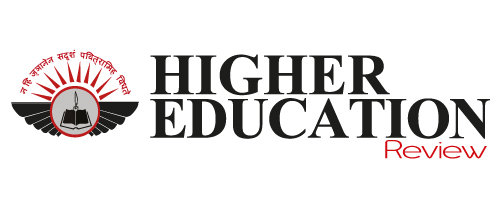Excellence in Pharmacy Education: Bridging Research, Practice, and Industry
 In an interaction with Higher Education Review, Monica Gulati, Executive Dean at Lovely Professional University, shared her insights on aligning pharmaceutical education with industry needs and global standards. With a strong academic background from Punjab University, as well as more than 20 years of experience working at LPU, including some experience in a pharmaceutical company called Panacea Biotech, which makes her stand out.
In an interaction with Higher Education Review, Monica Gulati, Executive Dean at Lovely Professional University, shared her insights on aligning pharmaceutical education with industry needs and global standards. With a strong academic background from Punjab University, as well as more than 20 years of experience working at LPU, including some experience in a pharmaceutical company called Panacea Biotech, which makes her stand out.
Her experience in bacteria therapeutics and colon targeting as well as her experience in teaching, and administration, informs her perceptions on how to shape translational research, improve on practical training, stimulate industry-academic partnership, and connect emerging areas, such as AI, digital health, and pharmacogenomics into pharmacy education to educate students to meet future global challenges and opportunities.
In the evolving landscape of pharmaceutical sciences, how can institutions ensure that academic research remains aligned with current industry needs and clinical returns?
Industrial pharmacy involves drug development, drug quality control, and drug distribution in the market, whereas clinical pharmacy deals with patient-related outcomes of therapy and unmet medical needs. The institutions have to single out individual pain points using collaborative needs evaluation with industry and clinical stakeholders, e.g. streamlining production procedures, compliance with regulations, or enhancement of drug efficacy and safety.
A strong industry-academia relationship is essential, which requires an established set of rules to govern ethical issues, including the safety of human subjects in clinical research, and the confidentiality of data by adopting secure protocols. With such monetary value involved, the rights to intellectual property should be well established to oversee ownership and commercialization of the property. The execution of a project is probably different in terms of complexity; one will have laboratory-based research, preclinical research, or clinical trials that will require much infrastructure and supervision, whereas minor operations, such as surveys among stakeholders or data analyses, will not need that intense coordination effort. Organizations should give resources and skills to enhance these activities.
Finally, academic curricula should integrate industry-relevant research, incorporating training in advanced technologies, regulatory standards, and clinical trial methodologies to prepare students for practical challenges.
What are the most effective ways to incorporate translational research into pharmacy education to benefit both students and society at large?
One of the main strategies involves ensuring inclusivity by addressing the underrepresentation of certain groups, such as diverse ethnicities, genders and age groups, in clinical research. The majority of research included men as participants and created major gaps in data on female patients and other underprivileged groups.
By emphasizing the inclusion of these groups in translational research, pharmacy education programs can ensure that research outcomes are equitable and applicable to diverse populations, thereby enhancing societal healthcare outcomes. Moreover, it is crucial to train translational research by incorporating it in the curriculum in the form of organized and structured experimental learning opportunities.
Participants in such projects spend a lot of time, effort, and resources and their efforts should be rewarded with academic credits. Not only does this promotes participation but also provides the students with the skills and knowledge in meaningful careers in pharmaceutical research and clinical practice.
Moreover, the success of translational research relies on resolving key issues such as ethical considerations, resource allocation and stakeholder collaboration before the project initiation. These strategies enhance students' problem-solving abilities and employability, speeding up the design of innovative therapies.
In what ways can simulation labs, clinical rotations, and experiential learning be enhanced to strengthen students' practical skills?
In simulation labs, undergraduate students will be allowed to undertake clinical simulation in a safe, controlled way using advanced technologies such as virtual reality and high-fidelity mannequins. This builds technical proficiency, critical thinking, and confidence without risking patient safety.
Supervised clinical rotations allow students to apply theoretical knowledge to application in real-life contexts, where the safe development of the skills and effective feedback occurs. It’s crucial for undergraduates who lack the expertise for independent practice. Experiential learning including a case study, role-playing, and group projects give the student the ability to deal with evolving issues in the healthcare sector through problem solving and adaptability.
With the adoption of realistic simulation, supervised clinical exposure and the presentation to actual learning conditions, institutions facilitate the students to overcome complicated scenarios in a medical and an industrial environment. These regulatory training modules connect theory with practice equipping skilled professionals for the pharmaceutical workforce.
How can academia and the pharmaceutical industry collaborate to foster innovation, regulatory awareness, and entrepreneurship among pharmacy students?
The curricula should include globally relevant regulatory information so the students are aware of the requirements related to manufacturing, importing, exporting, selling and distributing drugs. It also includes understanding regulatory agencies such as the FDA, EMA.
To teach students to be more creative and entrepreneurial, the idea of startup development that became possible due to the success of healthcare startups in the past decade, prior to and after COVID-19. Curricula should include teaching important skills such as fundraising, securing bank loans, team building, market strategies, and networking. By embedding these elements, academia and industry would be empowering pharmacy students with the resources necessary to promote innovation and enterprise.
How can pharmacy education in India be aligned with international regulatory frameworks and global best practices to enhance global employability and innovation capacity of graduates?
For the global employability and innovation potential of pharmacy graduates in India to be increased, there must be alignment with the international regulatory framework and best practices. This would mean that the curriculum would include modules that include all training, so the students can conquer the international bodies, e.g. U.S. Food and Drug Administration (FDA), European Medicines Agency (EMA), and other international regulatory bodies.
These modules should address regulations governing the development, manufacturing, marketing, distribution and conducting the preclinical and clinical studies. Recent advancements in online platforms have access to high-quality and globally accepted training materials, and the institutions can integrate these standards into pharmacy education.
The institutions can offer courses according to the global regulatory compliance, equipping graduates with the needed knowledge and skills to be successful in international organizations improving their employability for other high demand occupations around the world.
How do you envision the future of pharmacy education evolving to integrate AI, digital health, and pharmacogenomics into mainstream learning?
Artificial intelligence and digital health should be adopted in the post-pandemic era as an imperative part of pharmacy education. Such developments can support molecular design, toxicity forecasting, EHR analysis, system competence, and individualized therapeutics, formally putting pharmacists ready to deal with a technology-invested healthcare environment. The Pharmacy Council of India’s inclusion of AI in its syllabus reflects this shift, phasing out outdated subjects to equip future pharmacists with skills for drug development, patient care, and global health system integration, ensuring leadership in a rapidly advancing field.

